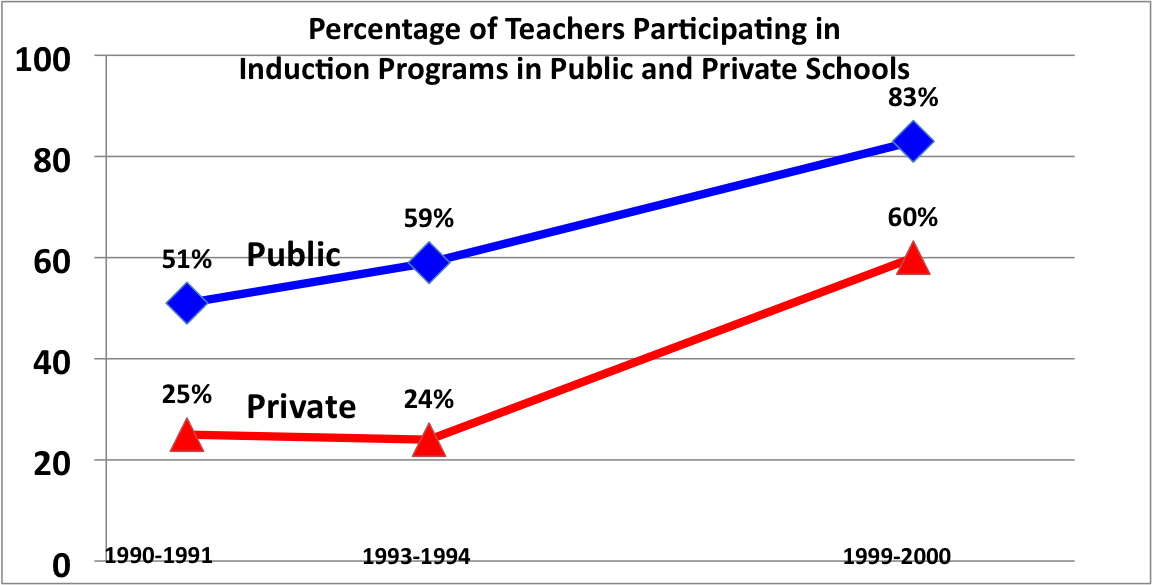What percentage of new teachers receive induction services?
Why is the question important? Beginning teachers have an extremely high turnover rate, which is an enormous cost for education systems, both in terms of student performance and dollars. High turnover results in increased numbers of inexperienced teachers, a loss of trained teachers, and a cost in dollars for recruitment, hiring, and training new teachers. Induction is one strategy that is being implemented to address retention issues. As it is a costly strategy, and the issue is so critical, it is important to understand its frequency of use.
See further discussion below.

Source: What Are the Effects of Induction and Mentoring on Beginning Teacher Turnover?
Results: The data suggests that a significant number of beginning teachers receive some form of induction support, and the trend is increasing.
Implications: This study suggests an increasing commitment to the use of induction with new teachers. It does not specify the various components of induction programs, or their outcomes. Commitment of such resources makes it critical that additional research is completed to determine the effectiveness of different induction models.
Authors: Thomas Smith, Vanderbilt University and Richard Ingersoll, University of Pennsylvania
Publisher: American Education Research Journal, Fall 2004, Vol. 41, No.3, pp 681-714.
Study Description: Smith and Ingersoll completed the analysis using data from the National Center for Education Statistics (NCES) surveys concerning schools and school personnel (Schools and Staffing Survey--SASS, Teacher Follow-up Survey --TFS). The U.S. Census Bureau collects the data from a random sample of schools, stratified by state, public/private, and school level. Each cycle of SASSincluded separate, but linked, questionnaires for administrators and for a random sample of teachers in each school. After 12 months, the same schools were again contacted, and all those in the original teaching sample who had left their teaching jobs were asked to complete a second questionnaire, designed to obtain information on their departure. The first part of the study was to generate descriptive data on induction, mentoring, and turnover. In the second stage the researchers used a multinomial logistic regression analysis to look at the impact various levels of induction had on teacher retention. The survey data can be found at: http://nces.ed.gov/Surveys/SASS/index.asp
Citation:
http://www.gse.upenn.edu/pdf/rmi/Effects-of-Induction-and-Mentoring-RMI-Fall-2004.pdf
